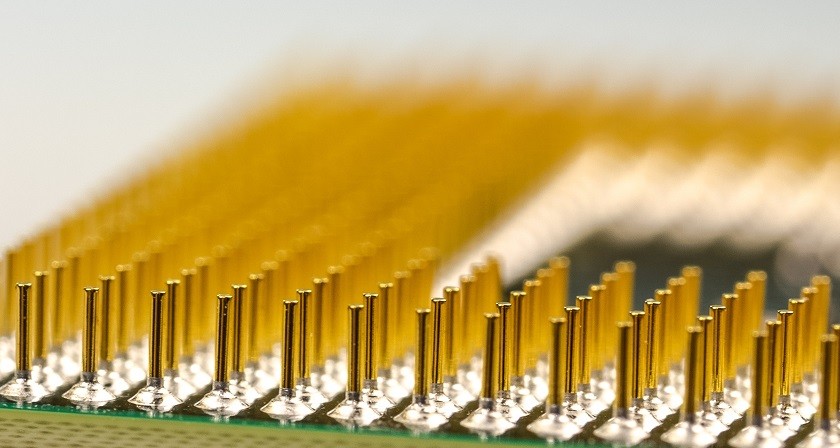UV curing acrylic vs UV curing epoxy
Two common types of UV curing (light curing) adhesives are those based on acylate and epoxy. The difference between them lies in their chemistry. Both the curing process and final properties differ.
Two common types of UV curing (light curing) adhesives are those based on acylate and epoxy. The difference between them lies in their chemistry. Both the curing process and final properties differ.
Two common types of UV curing (light curing) adhesives are those based on acylate and epoxy. Both are cured using UV or blue light between 365 nm and 405 nm. The difference between them lies in their chemistry. Both the curing process and final properties differ.
Do you want to learn more about the basics of light curing adhesives first? Click here to go to our post about this subject.
Acylic based light curing adhesives cure using free radicals. As the adhesive is illuminated by certain light waves, the light energy breaks apart the photoinitiators in it to create free radicals. Free radicals are extremely reactive. Instantly, they will start chemical reactions– initiation. This chain reaction continues very quickly into the next step called propagation (polymerization and cross-linking). As soon as the light source is removed, the reaction stops immediately. The reaction also stops as two radicals meet and react with each other – termination.
Because radicals are so reactive, the reaction can be difficult to control. Oxygen can for example inhibit the curing reaction. The radicals, that exist when the adhesives is illuminated, can instead of reacting with the components in the adhesive react with oxygen molecules from the surrounding air. By doing so, the reaction is terminated too early. As a result, we get shorter polymer chains than expected which gives us a sticky-feeling surface with worse mechanical properties. Learn more about what you can do to prevent oxygen inhibition here.
Example of an acrylic based UV adhesive: Epo-Tek OG603
A cationic curing adhesive contains a different type of photoinitiator than within radical curing formulations. The initiator is activated by light or heat and forms a “super acid” which is a cation. The cation has a proton (H+) which is used to initiate a ring opening polymerization reaction (ROP) of the epoxy. The reaction is slower than radical curing since the cation is less reactive than a radical.
Unlike radical curing UV adhesives, the curing reaction continues even after the light is removed. The properties of the adhesive continue to develop up to 24 hours after removal. There is no termination step in the reaction as for radicals. Instead the polymerization continues until there is no more material left to react with, although it is with a slower pace.
Example of an epoxy based UV adhesive: Epo-Tek OG116-31
| Acrylic | Epoxy | |
| Cure speed | Super fast curing. Full cure often reached within seconds. | Needs longer time for curing. 1–2 minutes is common. |
| Sensitivies | Oxygen inhibition on the surface of the adhesive can cause problems. | The uncured adhesive can be sensitive to moisture (also high relative humidity), amines and other bases. Be cautious with pigments and fillers in coatings and polyurethane based substrates. |
| Adhesion | Good adhesion to most plastics (choose produtct according to plastic type) as well as metals and glass. | Good adhesion to metals, glass and some plastics. |
| Depth of cure | Can cure relatively deep, up to 10 -15 mm for some formulations. | |
| Shrinkage | Higher shrinkage of up to 10–15 % | Low shrinkage between approximately 1–5 % |
| Resistance | Often more chemically resistant, water resistant. | |
| Environmental | Has a stronger odour. | Epoxy allergy. |
| Storage | Stored in room temperature. | Stored in a refrigerator and whould be brought to room temperature before use. |
| Shadowed areas | Specially formulated products can have secondary cure mechanisms (moisture or heat most common) for cure of shadowed areas. | Partly continued cure even after light is removed. In many cases has secondary heat curing mechanism. |
| Post-curing | Post-cure not needed and has no positive effects.
|
Post-cure with heat can be required and/or give enhanced properties. |
| Appearance | Often optically transparent and non-yellowing. | Transparent but often yellowish. More yellowing than acrylic. |

Removing a cured adhesive can be tricky and the type will determine the method. The main methods are heat, chemicals and mechanical force.
Read more
When choosing an adhesive for your application, it is advantageous if you consider the adhesive viscosity to best suit your application and process.
Read more
Medical grade adhesives are commonly biocompatibility tested according to ISO 10993 standard. Choose Epoxy, UV-curing adhesive or silicone.
Read more
Electrically conductive adhesives are used in many different types of industries and applications. Some examples are electronics, solar cell, medical, aerospace, space and automotive applications.
Read more
Silicone rubber is one of the most difficult-to-bond rubbers. We will give you options for adhesives that can help you bond silicone.
Read more